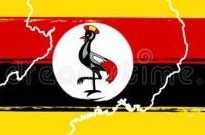List Of Natural Resources In Uganda
What are natural resources?
Natural resources are materials from the Earth that are used to support life and meet people’s needs. Any natural substance that humans use can be considered a natural resource. Oil, coal, natural gas, metals, stone and sand are natural resources. Other natural resources are air, sunlight, soil and water.
Uganda is a country in East-Central Africa that is bordered by Tanzania, Kenya, and the Democratic Republic of the Congo (DRC).
The landlocked country covers an area of approximately 242,034 square kilometers and has a population of about 33.6 million people. Uganda has substantial natural resources, including a favorable climate, arable land, oil reserves, and small deposits of minerals such as copper, cobalt, limestone, and gold. These natural resources are abundant but poorly developed. Given Uganda’s large tracks of arable land, agriculture is one of the most important sectors of the economy, accounting for over 70% of employment. However, the mineral sector is not well developed and is not a major contributor to the economy.
Some of the major natural resources of Uganda are described below.
Salt
Salt extraction has been a source of prosperity for decades in certain communities in Uganda, especially those near Lake Katwe, which is a crater lake located inside Queen Elizabeth National Park, in the Kasese District. Lake Katwe is about 9 kilometers wide and six feet deep at the deepest point and is the chief producer of salt in Uganda.
Fertile Soil
With an area of 242,034 square kilometers, Uganda is the 9th largest country in East Africa. Uganda’s soils are some of the most fertile in Africa. In fact, the country accounts for almost 50% of East Africa’s arable land. According to a 2014 report by the World Bank, Uganda has 6.9 million hectares of arable land, which represents 34.41% of the country’s total land area. Regardless of this estimate, the country considers 71.9% of its total land area to be agricultural land.
Climate
Uganda experiences a warm tropical climate, with temperatures ranging between 25 °C and 29 °C, except for the highlands and mountainous regions, which experience lower temperatures. For example, the top of Mount Elgon is covered with snow for most of the year. The hottest season in Uganda runs from December until February.
Oil
While currently small, the oil industry in Uganda has significant potential for growth. Western Uganda is estimated to contain 6.5 billion barrels of oil reserves, about 1.4 billion barrels of which are estimated to be economically recoverable. Additionally, promising oil fields have been discovered near Lake Albert.
Copper
Copper is mined in several locations in Uganda. However, the country’s only major copper deposits are located in Kilembe. Other notable areas include Bobong, Kitaka, and Kampono. Located in the town of Kilembe, at the foothill of the Ruwenzori Mountain in Western Uganda, the Kilembe Mines contain both copper and cobalt. It is the largest copper mine in Uganda, containing an estimated 4 million tons of copper and an undetermined amount of cobalt ore.
Gold
Although gold deposits are distributed across Uganda, only a few regions, such as Kahengyere, Muti, and Mashoga, have been exploited. Gold production primarily occurs through small-scale producers, such as licensed artisans and miners.
Iron Ore
Iron ore in Uganda is primarily mined as two types of minerals: hematite and magnetite. Hematite is of higher quality and is found mainly in Butare and Kamena, with deposits exceeding 50 million tons. Magnetite is found in Bukusu, Nangalwe, and Namekhara, which produce a total of 41 million tons. Iron ore production is limited in Uganda and is primarily used in steel scrap smelting.
Non-Metallic Resources
Uganda has a wide variety of non-metallic resources, which include talc, mica, graphite, limestone, clay, feldspar, diatomite, glass, kaolin, phosphate, nickel, and rare earth elements.
What are the mineral resources in Uganda?
The natural resources of Uganda are abundant but poorly developed and include copper, cobalt, limestone, and salt. The country has several untapped reserves of lucrative minerals like gold, nickel, platinum, and marble. The majority of the mining and mineral processing units are privately owned.
What is Uganda’s most valuable resource?
Oil.
While currently small, the oil industry in Uganda has significant potential for growth. Western Uganda is estimated to contain 6.5 billion barrels of oil reserves, about 1.4 billion barrels of which are estimated to be economically recoverable.
